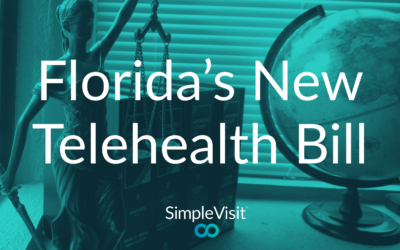ATA Releases the State of the States Report
Industry Update | July 31, 2019
The American Telemedicine Association (ATA) has recently released one of the most comprehensive surveys of legislation and reimbursement for telehealth services in the nation… and reveals an encouraging glimpse of the future.
The ATA is a non-profit association based in Washington, D.C. and is “the only organization completely focused on advancing telehealth,” as is stated on their website. They work tirelessly to educate the healthcare industry, effect change in governmental policies, and improve the quality of virtual care services through resources, advocacy, and partnering with all types of members of the telemedicine community.
The report, which includes more than 50 pages of data, opens up with an encouraging figure: 40 states and the District of Columbia have improved or started the process of improving their telehealth policies since the last publication of this report. It then goes on to highlight all things telehealth-policy-related, including RPM, coverage for asynchronous services, and innovative payment models. Here at SimpleVisit, we are strong supporters of the movement to open up access to healthcare in the home, so we were particularly excited to read that ten states and Washington DC have changed their originating sites requirements since the report was last published. Currently, 29 out of all 50 states do not have a patient location requirement in their rules, and out of the remaining states, 12 include the patient’s home as an eligible originating site.
Also of interest to our readers are the updates to common payer guidelines. The report details that Medicaid programs in 21 states and Washington D.C. are required to cover telehealth services the same way they do in-person services, and 28 others are required to reimburse the same as well. This shift towards payment parity in addition to coverage parity is also reflected (albeit to a lesser degree) in regulations for private payers, mandating that 16 states regulate reimbursement rates be the same for virtual care services as the same covered services delivered in-person. Overall, 19 state policies on parity, either for private payers or Medicaid, have been adopted or changed in the past two years. That forward momentum is good news, to say the least, as the more payers reimburse fairly and responsibly for these services, the more providers will be able to offer them on a larger scale and the nearly 16 million Americans without access to healthcare (based on early release of data from the 2018 National Health Interview Survey) will be given the opportunity to improve their quality of life and longevity.
Finally, the report included a helpful guide to the most common provider types allowed to use telehealth. The top eight are physicians, physician assistants, nurse practitioners, licensed mental health professionals, occupational therapists, physical therapists, psychologists and dentists. However, laws and regulations in 26 states do not include a provider type requirement at all.
Ann Mond Johnson, the Chief Executive Officer for ATA, said it well in a press release accompanying the publication, “This year’s ATA report illustrates the increasing recognition of telehealth[…] Collectively, states are realizing the many benefits of telehealth and are implementing policies that advance utilization.”
While we may not be there yet, things are getting better. Slowly but surely, we are heading towards a future where telehealth is just another stop on the continuum of care no matter who or where you are.
To read the full report, go to www.americantelemed.org and sign-up for a free membership. “The Source” section of the website shows this report and many other resources geared toward helping those who do telemedicine improve and expand utilization.

Allie Clark
Allie is an Industry Analyst and Content Manager for SimpleVisit. Her educational background is diverse with Administrative Medical Assisting and Psychology as a focus with a dash of Business Communication and Theater. Unique life experiences have led to a passion for improving access to healthcare and a particular talent for research, which she is quickly turning into a career. Allie is able to use her combined experience to write and develop resources for SimpleVisit, and is fulfilled by the opportunity to contribute to innovation and progress in the healthcare industry as a whole.
Guide to Pricing Video Visits
Allie Clark | 5 min read | May 31Confusion over reimbursement policies for telemedicine appointments contributes to slow adoption among healthcare providers around the county. The emergence of telehealth technology has created a cloud of uncertainty on the economy of...
Florida’s New Telehealth Bill
Allie Clark | 1 min read | May 16April 29, 2019 saw the passing of a new (and long-awaited) telehealth bill by the Florida legislature, and, for the most part, the take-aways are positive. Here are the highlights: Taking effect July 1, 2019: A definition which...
Righttime Case Study
Urgent Care Telemedicine [Case Study]Righttime Urgent Care has over a dozen locations covering 10 counties in the state of Maryland. They had been wanting to offer telemedicine services for quite some time, but their project had been stymied because of integration...




